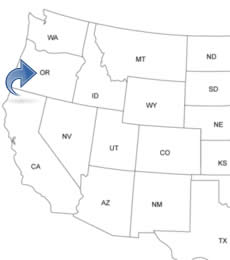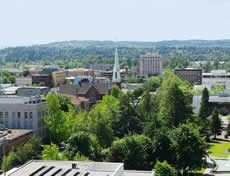OREGON PEOPLE SEARCH!
- ✔ Contact Info
- ✔ Phone Numbers
- ✔ Criminal Records
- ✔ Income Info
- ✔ Neighbors
- ✔ People's Age
- ✔ Property Ownership
- ✔ And Much More
Salem, Oregon
Salem is located in the north-western part and is the capital and it is now the second largest city in the U.S. state of Oregon. The Cherry City. Salem offers a wide array of tourist attractions. The downtown is one of the most vital retail centers for a community of its size and several parks and historic district are within walking distance. The Willamette River gives you access to fishing and other water sports. Salem Hospital Regional Health Services is the city's largest private employer and the film One Flew Over the Cuckoo's Nest was filmed at the Oregon State Hospital.
To See And To Do In Salem
- AC Gilbert's Discovery Village
- Western Antique Powerland
- Mission Mill Museum
- Friends Of Historic Deepwood Estate
- Willamette Mission State Park
- Bush's Pasture Park
- Bush House
- State Capitol Building
- Marion County Historical Society Museum
- Salem Riverfront Park
History Of Salem - Timeline
The Calapooya Indian village was located in Salem long before the first white settlers came. The Calapooya people witnessed a rapid decline after the white settlers came. In 1812, the first European-Americans arrived to the Salem area. They were working as trappers and a log dwelling and a trapping house were built. Also French-Canadian fur traders lived in the area.
In 1840. Jason Lee and Methodist Missionaries erected a lumber mill. In 1841, Jason Lee and the missionaries built a house in Salem for Jason Lee and his family. In 1842, Salem was founded and a flour mill was built. The same year the missionaries established the Oregon Institute, a school for European-Americans children. In 1843, a new chapel was built. In 1847, the platting of the new town was completed. In 1850, a private house served as a capitol building.
In 1857, Salem was incorporated as a city. In 1860, the Marion County Housing Committee Demonstration House, on Wilson St, was built. In 1864, telegraph service had arrived. In 1872, the railroad was completed. In 1884, a telephone service was available in the city. Also in 1884, the Port–Manning House was built by Dr. Luke A. Port. In 1887, the Gilbert House Children's Museum was built. In 1889, a streetcar line was established. In 1890, the streetcar line was driven by electricity. In 1894, the Deepwood Museum & Gardens was completed. The house was built by Dr. Luke A. Port. In 1895, he sold the home to Judge George G. Bingham.
In 1903, the first cherry festival in Salem was held. In 1911, the Edward W. St. Pierre House was completed. In 1913, the Jones–Sherman House was built. In 1918, Salem's passenger train depot serves Amtrak and Greyhound was built. In 1924, the Curtis Cross House was built. In 1932, Television was first seen in Salem. In 1938, the today's Oregon State Capitol was completed. In 1942, at the Oregon State Hospital, 47 people died and 467 were sick after eaten scrambled eggs.

